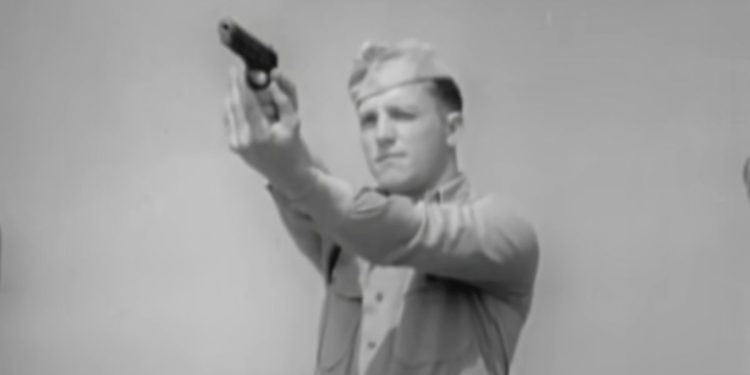The firearm that “won two world wars” has reached the end of its service with the U.S. military.
Marine Corps Systems Command confirmed with The Drive in June that the Colt M1911 had been withdrawn from service. The Marine Corps had been the last branch to use the handgun.
An upgraded 1911 variant designated the M45A1, previously in service in Marine Corps special operations and reconnaissance units, has been replaced with the 9mm M18 pistol.
The Marines had announced their intention to replace all sidearms with the newer M18 handgun in 2019.
The .45-caliber semiautomatic Colt 1911 is named after the year of its release.
The handgun served as the primary sidearm of the U.S. military in both World War I and World War II, also appearing in conflicts such as the Korean War and the Vietnam War.
Task & Purpose recounted that during World War I, Army Sgt. Alvin C. York “used his 1911 pistol to single-handedly kill six German soldiers charging him with fixed bayonets.”
“He earned the Congressional Medal of Honor as a result.”
The 1911 was finally dethroned as the military’s standard-issue sidearm in 1985, when it was replaced by the 9mm Beretta M9.
Still, it was carried by a U.S. Army general in Afghanistan as recently as 2019, according to another report from Task & Purpose.
The 1911 is designed for single-stack magazines, with standard-capacity mags able to hold seven rounds.
This capacity pales in comparison to that of newer, striker-fired pistols, such as Glock and Sig Sauer handguns. However, proponents of the 1911 point to the stopping power and lethality of the .45 round in comparison to 9mm.
The 1911 was designed by legendary gunsmith John Browning, a craftsman considered by many to be unrivaled in his contribution to American military arms.
Browning was also responsible for developing weapons such as the Browning automatic rifle and the .50-caliber M2 machine gun. The M2 remains in widespread military use today.
The U.S. government provides a way for civilians to purchase surplus 1911s through its Civilian Marksmanship Program.
This article appeared originally on The Western Journal.


























 Continue with Google
Continue with Google